Click on the exhibit.
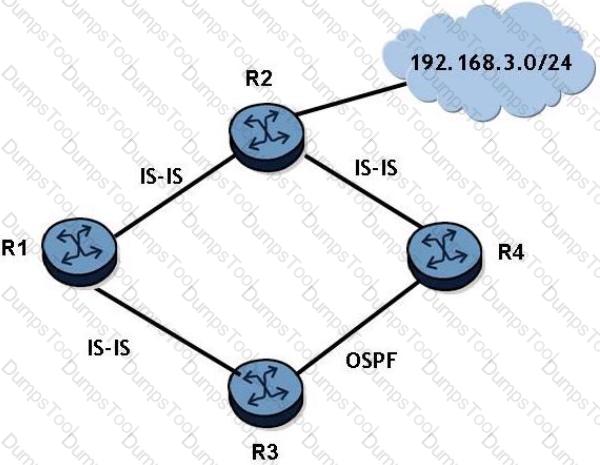
Router R2 has a directly connected interface to network 192.168.3.0/24 that is included in IS-IS.
If router R4 redistributes the IS-IS route to 192.168.3.0/24 into OSPF, router R3 will receive two routes to 192.168.3.0/24. Assume that all IS-IS routers are L1/L2 capable and are in the same area.
Which of the following is TRUE?
Which of the following is FALSE about the databases used by a link-state routing protocol in a single area routing domain?
Which of the following OSPF area types are supported by the Alcatel- Lucent 7750 SR? Choose two answers.
Which type of IS-IS router is summarization most likely to be configured on?
Click the exhibit button.
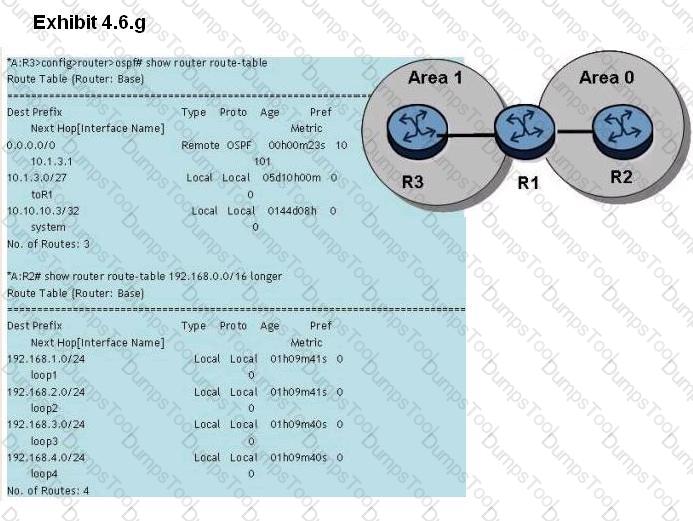
Given the topology and the show commands, and assuming that router R2 advertises all of its loopbacks into OSPF, what is the correct router R1 configuration?
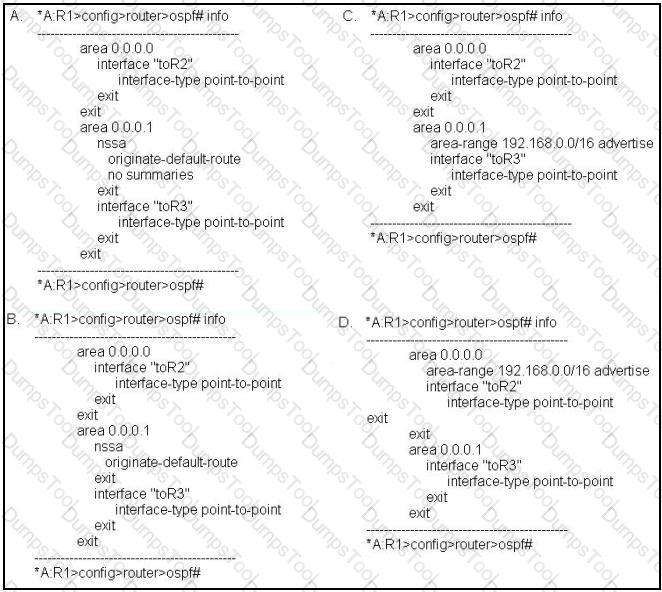
Which of the following conditions will prevent an OSPF adjacency from reaching the full state? Choose three answers.
Which of the following are similarities between OSPF and IS-IS? Choose two answers.
Which of the following statements regarding distance vectors protocols are true?
(Choose two answers).
An Alcatel-Lucent 7750 SR receives a route via an IS-IS LSP with internal reach ability, and receives the same route via an OSPF type 5 LSA. If al protocol preferences are default, which route will be installed in the route table?
NSSA LSA packets are what type within an NSSA area, and are converted to what other type at the ABR?
What best describes the type of packets used by OSPF routers to exchange updates on a pointto-point link?
In an OSPF Hello packet what fields must match all neighbor routers on the segment? (Choose 3)
Which of the following statements regarding OSPF routing updates on a multi-access network segment is true?
When redistributing OSPF into RIP V2 what must be taken into consideration for the redistribution to take place?
The Alcatel-Lucent 7750 SR supports which two of the OSPF area types below?
Refer to the exhibit below. IS-IS IPv6 routing is configured in the network with globally routed addresses as shown. How many routes will R4 have in its IPv6 route table?
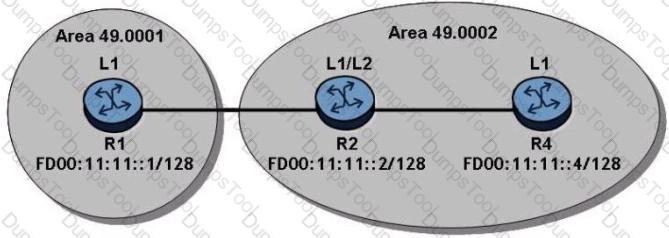
When multiple routing protocols offer a route for the same prefix, what part of the router is in charge of deciding which route to make active?
A router receives an OSPF database description packet from a neighbor that references an LSA, which is already in the router's LSDB. The sequence number in the DBD packet is lower than the sequence number of the LSA in the LSDB.
What action does the router take?
Click the exhibit button.

Router R2 advertises the network 192.168.3.0/24 to router R1 via RIP.
How can router R1 ensure that it discards the route?
Click on the exhibit.
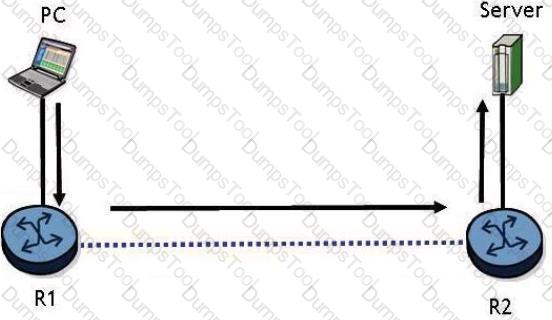
Which of the following best describes the format of data traffic sent to the server as it exits from the PC?
Click on the exhibit.
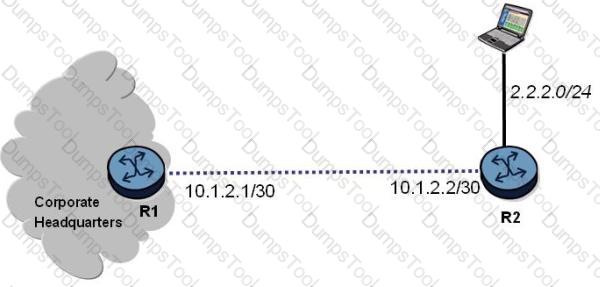
What is the correct command to configure a default route on the Alcatel-Lucent 7750SR R2?
An OSPF adjacency is stuck in the exstart state. What is the most likely cause?
When a router performs the SPF calculation, which router is used as the root of the shortest path tree?
Click on the exhibit.
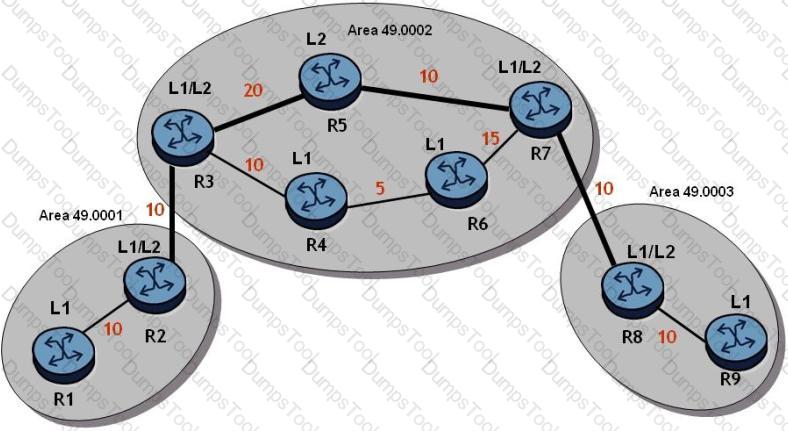
The numbers beside the links are the metrics for that link.
Given the diagram, what path will traffic follow from router R2 to router R8, and from router R8 to router R2, if IS-IS is the routing protocol?
Click on the exhibit.
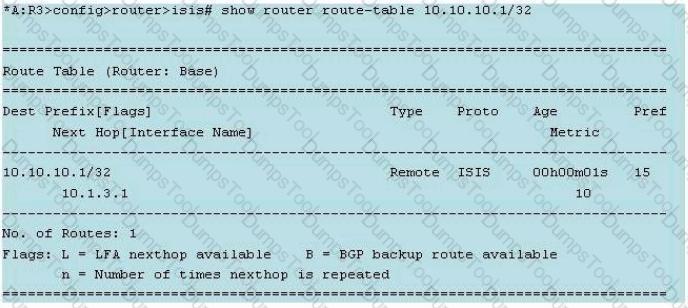
The operator of an IS-IS network wishes to have link metrics dynamically calculated in the same manner as OSPF. The router with system address 10.10.10.1 is one hop away on a 1 Gbps link
Which of the following is correct?
Click on the exhibit.
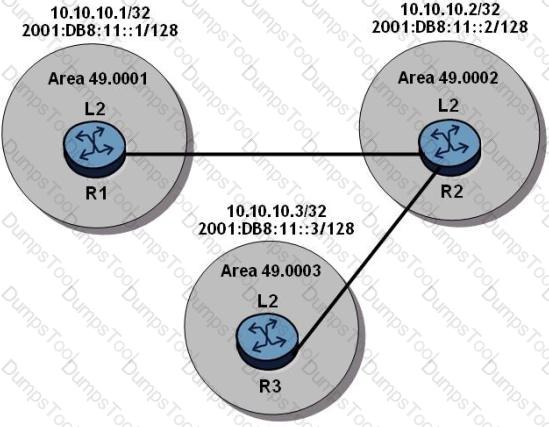
The routers have an established IS-IS L2 adjacency on which IPv4 system addresses are exchanged. An operator successfully configures multi-topology IS-IS routing so that the IPv6 system addresses are also exchanged between routers.
After IPv6 has been configured, which of the following is TRUE?
Which field of an IPv6 header indicates an upper layer protocol carried in the packet?
A static route needs to be configured with a next-hop that is NOT directly connected to the router. Which of the following must be TRUE?
Click on the exhibit.
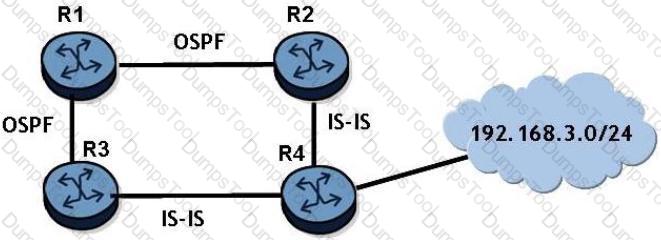
If router R2 re-distributes the IS-IS route 192.168.3.0/24 into OSPF, router R3 will receive two routes to 192.168.3.0/24. Assume that all IS-IS routers are L1/L2 capable and are in the same area.
Which of the following is TRUE?
Static routing is to be used in a network between a corporate head office with many connected networks and a branch office with one connection to the head office. Which of the following is the most likely configuration on the head office and branch office routers?
Which type of OSPF LSA has the following characteristics: It is flooded only within the area it originates from and can be originated by any OSPF router within the area (including non-DR routers).